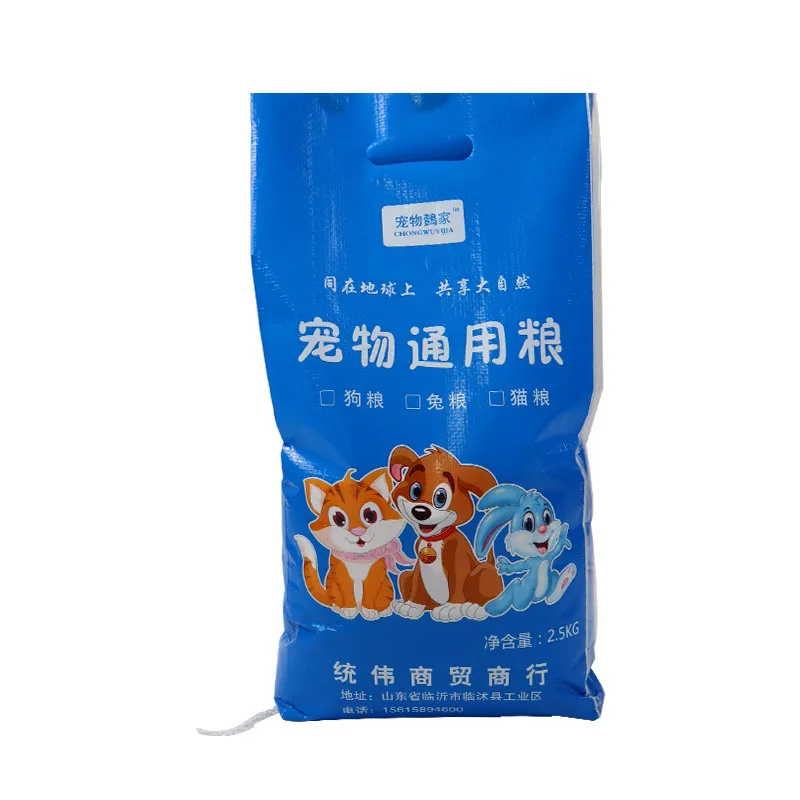
Automated packaging technology has transformed the way products are packaged across various industries. One of the most innovative methods is the use of Form-fill-seal woven bags (FFS Woven Bags), which facilitate the efficient packaging of a wide range of products, from seeds to agricultural goods. The significance of this technology extends beyond mere efficiency; it also incorporates various requirements specific to different types of products. This article delves into how FFS technology operates, alongside the specific requirements for packaging seeds, nuts, grains, rice, soybeans, wheat, corn, coffee beans, starch, and processed agricultural products.
Understanding Form-Fill-Seal Woven Bags
Form-fill-seal woven bags are manufactured using a specialized process that allows for both the creation of the bag and the filling of its contents in one streamlined operation. This method enhances packaging efficiency and reduces waste, contributing to a more sustainable production process.
- Process Overview:
- Formation: The woven fabric is unwound and formed into a bag shape on the machine.
- Filling: Once the bag is formed, it is filled with the desired product.
- Sealing: The top of the bag is then sealed, ensuring that the contents are secure and protected.
This automated process can handle a variety of bag types, including Tubular Woven Bags and FFS PP Bags, which can be customized to meet specific industry requirements.
Product Requirements for Different Applications
The requirements for packaging different products can vary significantly based on factors like thickness, weight, size, type of bag, and additional features such as inner liners or lamination. Below is a detailed analysis of these requirements, particularly for seeds, nuts, grains, rice, soybeans, wheat, corn, coffee beans, starch, and processed agricultural products.
| Product Type | Bag Thickness (mm) | Weight (g/m²) | Size (cm) | Bag Type | Lamination | Inner Liner | Special Features |
|---|---|---|---|---|---|---|---|
| Seeds | 0.12 – 0.15 | 120 – 160 | 30×50 | FFS Woven Bags | Yes | Yes | Moisture resistance, UV protection |
| Nuts | 0.15 – 0.20 | 150 – 200 | 35×60 | FFS PP Bags | Yes | Yes | Breathable, anti-static |
| Grains | 0.12 – 0.18 | 130 – 180 | 40×70 | Tubular Woven Bags | Yes | No | Bulk packaging, high strength |
| Rice | 0.15 – 0.20 | 150 – 250 | 50×80 | FFS Woven Sacks | Yes | Yes | Heavy-duty, moisture-proof |
| Soybeans | 0.12 – 0.16 | 120 – 160 | 40×70 | FFS Woven Bags | No | Yes | Cost-effective, durable |
| Wheat | 0.15 – 0.20 | 140 – 200 | 45×75 | FFS PP Bags | Yes | No | Customized printing, reinforced bottom |
| Corn | 0.12 – 0.18 | 130 – 180 | 45×75 | Tubular Woven Bags | Yes | No | High capacity, stackable |
| Coffee Beans | 0.15 – 0.25 | 160 – 220 | 30×60 | FFS Woven Bags | Yes | Yes | Aroma preservation, resealable options |
| Starch | 0.12 – 0.18 | 120 – 150 | 35×60 | FFS Woven Sacks | No | Yes | Dust-proof, easy-to-fill |
| Processed Products | 0.15 – 0.20 | 150 – 200 | 50×80 | FFS PP Bags | Yes | Yes | Shelf life extension, tamper-evident |
Key Considerations in FFS Woven Bag Design
The design and specifications of Form-fill-seal woven bags must cater to the unique needs of the products being packaged. Here are several considerations that affect the choice of bags:
- Thickness and Weight:
- Thicker bags offer greater durability, which is essential for heavy products like rice and processed grains.
- Lightweight bags are suitable for lighter goods such as seeds and starch, optimizing cost without compromising functionality.
- Size:
- The size of the bags should be proportional to the volume of the product being packaged. For instance, larger bags are preferable for bulk grains, whereas smaller bags work for seeds and nuts.
- Type of Bag:
- Various types of bags serve different functions. FFS Woven Bags, FFS PP Bags, and Tubular Woven Bags each have unique properties that make them ideal for specific applications.
- Lamination:
- Laminated bags provide additional protection against moisture and external elements. This is particularly crucial for products such as nuts and coffee beans, which require a barrier to maintain freshness.
- Inner Liners:
- The inclusion of inner liners can further enhance product protection. Products like seeds and sensitive agricultural items benefit significantly from this feature.
- Special Features:
- Some products demand unique attributes such as UV protection, breathability, or resealable options. Understanding the specific needs of each product helps in selecting the appropriate packaging.
Conclusion
The evolution of automated packaging through Form-fill-seal woven bags represents a significant advancement in the efficiency and effectiveness of product packaging. By understanding the distinct requirements of various products, manufacturers can customize packaging solutions that not only enhance protection but also improve operational efficiency.
For further insights into the world of Form-fill-seal woven bags, refer to our detailed article on Form-fill-seal woven bags, where we explore the nuances of this packaging technology. As industries continue to innovate, the flexibility and adaptability of FFS Woven Bags will play a crucial role in meeting the diverse demands of the market.